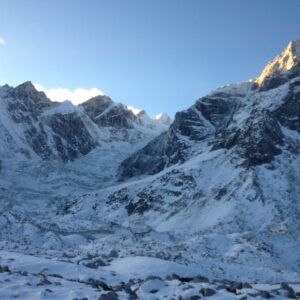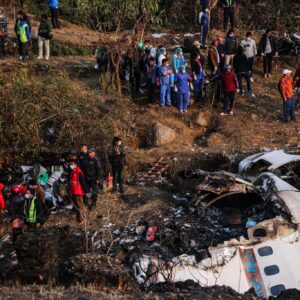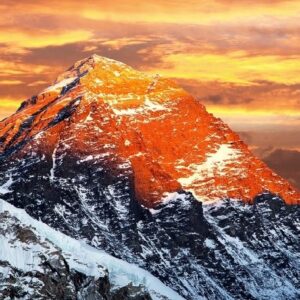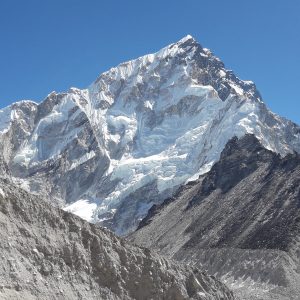
Nepal Tourism | Tourism development in Nepal | Nepal Tourism History
 01 Jan, 1970
01 Jan, 1970
Nepal Tourism Info
Nepal is one of the small but richest countries in the world in terms of biodiversity due to its unique geographical position and altitude variation. Nepal is the country of Mount Everest, the highest mountain peak in the world, and the birthplace of Gautam Buddha- Lumbini. Similarly, Nepal possesses 8 of the 10 highest mountains in the world including Mt. Everest. Because of the presence of a fine blend of art, culture, and tradition along with natural beauty, with varieties of beauty and pleasure to it is one of the world’s best places to explore.
Tourism, the act, and the process of spending time away from home in pursuit of recreation, relaxation, and pleasure while making use of the commercial provision of service.
When Did Tourism Start in Nepal?
By the early 21st century, international tourism had become one of the world’s most important economic activities and its impact was becoming increasingly apparent from The Arctic to Antarctica. Similarly, tourism is the third-largest industry in Nepal and its largest source of foreign exchange and revenue. Nepal’s major tourist activities include wilderness and adventure activities such as mountain biking, bungee jumping, rock climbing, and mountain climbing, trekking, hiking, bird watching, mountain flights, ultralight aircraft flight, paragliding, and hot air ballooning over the mountains of the Himalaya, hiking, and mountain biking, exploring the waterways by raft, kayak or canoe, and jungle safaris, especially in the Terai region. And popular tourism types in Nepal are a business, adventure, cultural, sustainable/ Eco-tourism, pilgrimage, educational, sports, rural, medical, backpacker, Geo-tourism, etc.
Though the exact date and history of tourists are coming to Nepal are still unknown, it is believed that Tourism in Nepal started after the first successful ascent of Mt. Everest on 29th May 1953 by Tenzing Norgay and Sir Edmund Hillary. Before the unification of Nepal by late Prithivi Narayan Shah, tourism was closely related to religion, politics, and business. likewise, only visitors from China, India, and Tibet visited Nepal for religious purposes. And due to the deliberate conservation policy of Rana rulers, Nepal remained virtually isolated and unknown to the outside world. During that period (1846-1950), Nepal was a forbidden land for foreigners except for the small traders and Indian pilgrims. After democracy came in 1955, foreigners were welcomed by Nepal Government by providing them a Tourist visa.
In 1956, under the supervision of French George Lebrec, National Planning Council on Tourism was set up and started to promote tourism, even the same year National Tourist Development Board also came into existence. During the 70s, Nepal became a safe tourism destination due to its perfect climate, peaceful place, and unique cultures. After going through many processes and developing the historical Peace treaty agreement between Maoist and Government in 2006 was the biggest achievement as a positive message about Nepal was relayed to the international tourists. In 2011, the Tourism Year was celebrated for the second time.
Where Should I Visit in Nepal?
Tourism in Nepal has been seeing an increase in the number of visitors each year which only reflects the growth of this industry in Nepal. There are varieties of natural, cultural, and beautiful Himalayas to visit in Nepal. The popular tourist destinations in Nepal are, the capital of this place Kathmandu, the Kathmandu valley, Bhaktapur, Patan, Palpa, Chitwan, Janakpur, Pokhara, Ilam, Nagarkot, Annapurna region, Everest region, Langtang region, and many more palaces whereas the birthplace of Siddhartha Gautama Buddha, Lumbini falls to the south of Nepal and is one of the highlights of tourism in Nepal.
Similarly, there is a famous pilgrimage destination like; Pashupatinath, Muktinath, Swargadwari temple, Gosaikunda Lake, Halesi, Khaptad, Gadimai, Kankalini, Pathibhara, Baraha Kshetra, Budhasubba, Bishnupaduka, Dantakali, temples at Devghat, Manakamana temple which is in Gorkha district and more in Nepal. With 15 National & Wildlife Parks (two are UNESCO Heritage sites), Nepal is one of the last places on the earth you can spot the Asiatic rhinoceros and the Royal Bengal Tiger.
The tradition and famous hospitality of its many different groups are indeed a major part of what makes Nepal so special. From remote mountain villages to medieval hill-towns and the ancient cities of the Kathmandu valley, the people of Nepal are always welcoming. You can experience the strong and unique flavors of Nepalese cuisine, prepared with love and depth of flavor also you can join in and celebrate at once of the many festivals year-round. In fact, there is nowhere else in the world that can offer as many festivities as Nepal. Tourism is one of the mainstays of the Nepalese economy. For broad-minded individuals who value an experience that is authentic and mesmerizing, Nepal is the ideal destination.





